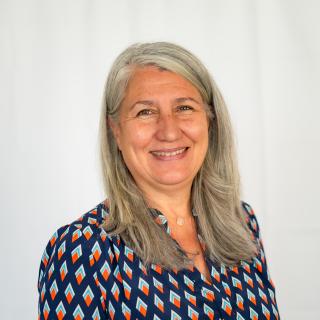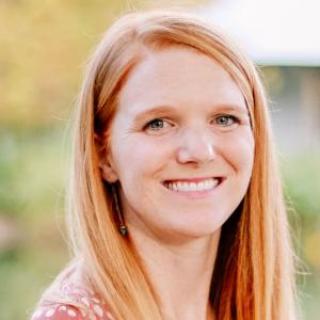Including Family Child Care in State funded Pre-K Systems
An Update
April 11, 2024
Our updated brief reports that while the number of states allowing FCC participation remained unchanged from 2019-2020 to 2022-2023, there were notable shifts in participation within states. The enrollment of children in FCC settings saw significant increases, with some states experiencing substantial growth. However, concerns regarding the quality of these settings and the learning outcomes for children persist, highlighting the need for further research and support as states expand their pre-K programs to include more FCC settings.
Read the initial 2021 report, Including Family Child Care in State and City-Funded Pre-K Systems
The Authors
GG Weisenfeld is a Senior ECE Policy Specialist at the National Institute for Early Education Research (NIEER) at Rutgers University, Graduate School of Education.
Erin Harmeyer is an Assistant Research Professor at NIEER. Her research interests include family childcare quality; caregiver-child interactions; and the academic readiness skills of preschool-age children.
About NIEER
The National Institute for Early Education Research (NIEER) at the Graduate School of Education, Rutgers University, New Brunswick, NJ, conducts and disseminates independent research and analysis to inform early childhood education policy.
Suggested Citation
1 National Survey of Early Care and Education (NSECE) Project Team. (2016). Characteristics of home-based early care and education providers: initial findings from the national survey of early care and education. OPRE Report #2016-13. Office of Planning, Research, and Evaluation, Administration for Children and Families, U.S. Department of Health and Human Services
2 Crosby, D., Mendez, J., & Barnes, A. (2019). Child care affordability is out of reach for many low-income Hispanic households. National Research Center on Hispanic Children & Families; Henly, J. R., & Adams, G. (2018). Increasing access to quality child care for four priority populations. The Urban Institute; Porter, T., Paulsell, D., Del Grosso, P., Avellar, S., Hass, R., & Vuong, L. (2010). A review of the literature on home-based child care: Implications for future directions. Mathematica Policy Research.
3 Coley, R. L., Votruba-Drzal, E., Collins, M. A., & Miller, P. (2014). Selection into early education and care settings: Differences by developmental period. Early Childhood Research Quarterly, 29(3), 319–332. http://dx.doi.org/10.1016/j.ecresq.2014.03.006
4 National Institute for Early Education Research (2022). New Jersey Strategic Plan for Preschool Expansion Phase I: The Foundation.
5 The State Superintendent of Public Instruction, in consultation with the Director of Social Services and the Executive Director of the State Board of Education has convened a universal preschool (UPK) mixed-delivery statewide interest holder workgroup pursuant to California Education Code (EC) Section 8202.6. The workgroup includes representatives from county offices of education, contracted CSPPs, including those operated by school districts and community-based organizations, FCCHENs, licensed FCC providers, transitional kindergarten programs, tribal preschool programs, educators, the Commission on Teacher Credentialing, First 5, resource and referral agencies, alternative payment programs, contracted general childcare programs serving preschool-age children, Head Start, private center-based preschool providers, researchers, and child development experts.
6 The number of state preschool programs was made from preliminary data collection for NIEER’s State of Preschool 2023 Yearbook which will be released in the spring of 2024.
7 Changes in Connecticut legislation allows family child care homes to participate in two of its state preschool programs: Child Day Care Contracts and School Readiness Program.
8 Kane, M. C., Harris, P., Jordan, D., Lloyd, C. M., Testa, M. B. S. (2021). Promising practices in policy for home-based child care: A national policy scan. Home Grown. https://homegrownchildcare.org/wp-content/uploads/2021/01/HBCC-policy-scan-10.29-1.pdf
9 For a state-by-state scan of FCC regulations see, Kane, M. C., Harris, P., Joran, D., Llyod, C. M., & Testa, M. B. (2021). Promising practices in policy for home-based child care: A national policy scan. Home Grown & Child Trends. https://homegrownchildcare.org/wp-content/uploads/2021/01/HBCCpolicy-scan-10.29-1.pdf
10 Virginia Early Childhood Foundation and Virginia Department of Education. (n.d.). Mixed delivery program guidelines. https://www.vbgrowsmart.com/_assets/Mixed-Delivery-Program-Guidelines-FY23.pdf
11 The State and CCPU agreed on the following items: A one-time $100,000 investment for the California Department of Human Resources to hire a consultant on behalf of the JLMC to provide recommendations and inform the JLMC on retirement benefit models to improve access to retirement benefits for FCC providers represented by CCPU. Up to $40,000 one-time investment to design and conduct a survey to determine the current access and unmet retirement needs of FCC providers represented by CCPU. A one-time $100,000 investment payable to such entity as designated by CCPU to a establish a CCPU Retirement Trust after agreement on a retirement model is reached. Three side letters to liquidate the entire $40 million training fund have been finalized by the parties and can be located at
https://www.calhr.ca.gov/Documents/2021.01.19%20Side%20Letter%20-%20Higher%20Ed.Peer%20Mentoring.pdf,
https://www.calhr.ca.gov/Documents/2022.07.22%20Apprenticeship.COC.TIC.BT.pdf, and
https://www.calhr.ca.gov/Documents/3rd%20SIDE%20LETTER%20-Access%20&%20Equity%20(Final).pdf.
The CCPU has established a website to share information on the training fund.
12 New Mexico Early Childhood Education & Care Department. (2021, September 9). ECECD launches pay parity program for preK educators. [Press release]. https://www.nmececd.org/2021/09/09/ececd-launches-pay-parity-program-for-prek-educators-2/.


